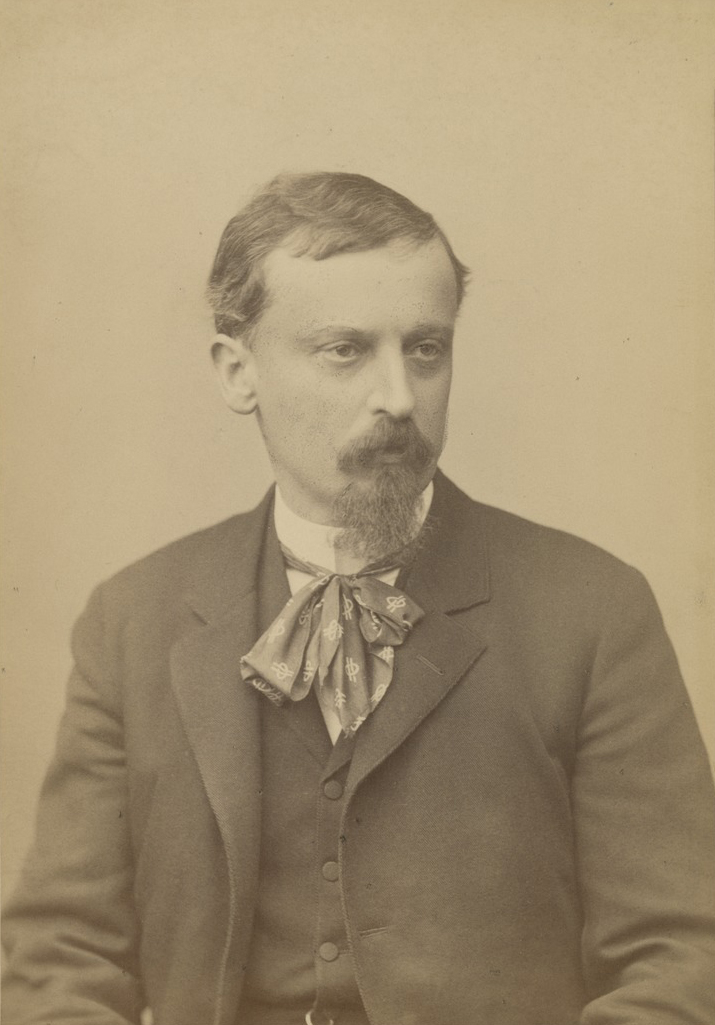|
Battle Of Zbarazh
The siege of Zbarazh ( pl, Zbaraż, uk, Збараж) was a 1649 battle of the Khmelnytsky Uprising. The Polish–Lithuanian Commonwealth forces held their positions besieged in the Zbarazh Castle until in the aftermath of Battle of Zboriv and the Treaty of Zboriv the hostilities paused and the siege ended. These events were described by Henryk Sienkiewicz in his novel ''With Fire and Sword'' (1884). Background In the first half of 1649, the Polish–Lithuanian Commonwealth negotiations with the rebellious Cossacks fell through, and the Polish-Lithuanian military begun gathering near the borders with the insurgent-held Ukraine. While the king organized the main Polish army, and Janusz Radziwill commanded the Lithuanian army along the Horyn River, an army under three regimentarzs (Andrzej Firlej, Stanisław Lanckoroński and Mikołaj Ostroróg) was located in Zbarazh from 30 June, where prince Jeremi Wiśniowiecki would arrive with reinforcements on 7 July. Wiśniowiecki's ... [...More Info...] [...Related Items...] OR: [Wikipedia] [Google] [Baidu] |
Khmelnytsky Uprising
The Khmelnytsky Uprising,; in Ukraine known as Khmelʹnychchyna or uk, повстання Богдана Хмельницького; lt, Chmelnickio sukilimas; Belarusian: Паўстанне Багдана Хмяльніцкага; russian: восстание Богдана Хмельницкого also known as the Cossack–Polish War, the Chmielnicki Uprising, the Khmelnytsky massacre or the Khmelnytsky insurrection, was a Cossack rebellion that took place between 1648 and 1657 in the eastern territories of the Polish–Lithuanian Commonwealth, which led to the creation of a Cossack Hetmanate in Ukraine. Under the command of Hetman Bohdan Khmelnytsky, the Zaporozhian Cossacks, allied with the Crimean Tatars and local Ukrainian peasantry, fought against Polish domination and Commonwealth forces. The insurgency was accompanied by mass atrocities committed by Cossacks against the civilian population, especially against the Roman Catholic clergy and the Jews, as well as sav ... [...More Info...] [...Related Items...] OR: [Wikipedia] [Google] [Baidu] |
Mikołaj Ostroróg
Mikołaj Ostroróg (1593–1651) was a Polish–Lithuanian szlachcic (nobleman), politician and general. He was Podstoli of the Crown since 1633, Stolnik of the Crown since 1624, Krajczy of the Crown since 1636, Podczaszy of the Crown since 1638, Starost of Tykocin since 1645 and buski since 1646. He served as the Sejm Marshal in the 1633. Deputy to a number of Sejms, he supported the policies of the administration, and was well known for his erudition in Polish and Latin. In his military career, he reached the rank of regimentarz. He took part in the losing battle of Pyliavtsi in 1648 during the Khmelnytsky Uprising. Later, in 1649, he fought at the siege of Zbaraż. Marshal of the Sejm (koronacyjny) on 8 February – 17 March 1633 in Kraków Kraków (), or Cracow, is the second-largest and one of the oldest cities in Poland. Situated on the Vistula, Vistula River in Lesser Poland Voivodeship, the city dates back to the seventh century. Kraków was the official ca ... [...More Info...] [...Related Items...] OR: [Wikipedia] [Google] [Baidu] |
Jan Skrzetuski
Jan Skrzetuski is a fictional character created by Polish author Henryk Sienkiewicz in the novel '' With Fire and Sword''. He is a man of honour, always faithful to his master, duke Jeremi Wiśniowiecki. He loves Helena Kurcewiczówna, who was kidnapped by the Ukrainian Cossack Yuri Bohun, who is also in love with her. Skrzetuski is the best friend of Michał Wołodyjowski. Jan Skrzetuski is partly based on a historical character, Mikołaj Skrzetuski, the Polish hero of the Siege of Zbarazh. In the 1999 film '' With Fire and Sword'' he is portrayed by Michał Żebrowski. Story Jan Skrzetuski (modeled on the historic form of Mikołaj Skrzetuski, a colonel from Greater Poland of the Jastrzębiec clan) was a young Polish nobleman ( szlachcic) of Jastrzebiec Coat of Arms serving Prince Jeremi Wiśniowiecki as lieutenant of the hussar regiment. In 1647 he was coming back from Crimea where he had been sent as an envoy. On his way he saved Bohdan Khmelnytsky who was attacked b ... [...More Info...] [...Related Items...] OR: [Wikipedia] [Google] [Baidu] |
Jasyr
Slavery in the Ottoman Empire was a lawful institution and a significant part of the Ottoman Empire's economy and traditional society. The main sources of slaves were wars and politically organized enslavement expeditions in the Caucasus, Eastern Europe, Southern Europe, the Balkans, and Africa. It has been reported that the selling price of slaves decreased after large military operations.Spyropoulos Yannis, Slaves and freedmen in 17th- and early 18th-century Ottoman Crete, ''Turcica'', 46, 2015, p. 181, 182. In Constantinople (present-day Istanbul), the administrative and political center of the Ottoman Empire, about a fifth of the 16th- and 17th-century population consisted of slaves. Statistics of these centuries suggest that Istanbul's additional slave imports from the Black Sea have totaled around 2.5 million from 1453 to 1700. Even after several measures to ban slavery in the late 19th century, the practice continued largely unabated into the early 20th century. As late a ... [...More Info...] [...Related Items...] OR: [Wikipedia] [Google] [Baidu] |
Aleksander Koniecpolski (1620–1659)
Prince Aleksander Koniecpolski (1620–1659) was a szlachta, Polish nobleman. He became the Great Chorąży of the Crown, Grand Standard-Bearer of the Crown in 1641, the Voivode, Palatine of Sandomierz Voivodeship in 1656, and the Starost of Perejasław, Korsun-Shevchenkivskyy, Korsun, Płoskirow and Dolyna, Dolina. He was the son of the famous hetman Stanisław Koniecpolski. During the Chmielnicki Uprising, he was elected as one of the regimentarz of Pospolite ruszenie and took part in the losing battle of Pyliavtsi in 1648. References 1620 births 1659 deaths Koniecpolski family, Aleksander 1620 Polish military personnel of the Khmelnytsky Uprising {{Poland-noble-stub ... [...More Info...] [...Related Items...] OR: [Wikipedia] [Google] [Baidu] |
Chorąży
Standard-bearer ( Polish: ''Chorąży'' ; Russian and Ukrainian: , ''khorunzhiy''; ; ) is a military rank in Poland, Ukraine and some neighboring countries. A ''chorąży'' was once a knight who bore an ensign, the emblem of an armed troops, a voivodship, a land, a duchy, or a kingdom. This function later evolved into a non-hereditary noble title. From the end of the 14th century in the Kingdom of Poland and the Grand Duchy of Lithuania, and later in the Polish–Lithuanian Commonwealth, there were four "central" ''chorąży'' positions: * Grand Standard-Bearer of the Crown; * Grand Standard-Bearer of Lithuania; * Court Standard-Bearer of the Crown; * Court Standard-Bearer of Lithuania. At the same time, ''chorąży'' was also an honorary office in a land. From the 16th century, ''Chorąży'' was the title of the military leader of a Cossack community, and later a rank in the Cossack Hosts. The rank, written "хорунжий" (khorunzhiy) in Russian, was officially recognized ... [...More Info...] [...Related Items...] OR: [Wikipedia] [Google] [Baidu] |
Henryk Van Peene
Henryk may refer to: * Henryk (given name) * Henryk, Świętokrzyskie Voivodeship, a village in south-central Poland * Henryk Glacier, an Antarctic glacier See also * Henryk Batuta hoax The Henryk Batuta hoax was a hoax perpetrated on the Polish Wikipedia from November 2004 to February 2006, the main element of which was a biographical article about a nonexistent socialist revolutionary, Henryk Batuta. History The perpetrators o ..., an internet hoax * Henrykian articles, a Polish constitutional law establishing elective monarchy * {{disambiguation, geo ... [...More Info...] [...Related Items...] OR: [Wikipedia] [Google] [Baidu] |
Regimentarz
A Regimentarz (from Latin: ''regimentum'') was a military commander in Poland, since the 16th century, of an army group or a substitute of a Hetman. He was nominated by the King of Poland or the Sejm. In the 17th century a Regimentarz was also the commander of Pospolite ruszenie in cases where a castellan or a voivode could not command personally. Regimentarz generalny was the commander of Confederations. See also * Offices in Polish-Lithuanian Commonwealth An office is a space where an organization's employees perform administrative work in order to support and realize objects and goals of the organization. The word "office" may also denote a position within an organization with specific ... Polish titles Military ranks of Poland {{Poland-mil-stub ... [...More Info...] [...Related Items...] OR: [Wikipedia] [Google] [Baidu] |
Horyn River
The Horyn or Haryn ( uk, Горинь ; be, Гарынь ; russian: Горы́нь; pl, Horyń) is a tributary of the Pripyat, which flows through Ukraine and Belarus. The Horyn is long, and has a drainage basin of .Горынь It has a maximum width of 80 m, and a maximum depth of 16 m. An important tributary of the Horyn River is the Sluch. The Horyn takes its source in the of Ukraine, south of t ... [...More Info...] [...Related Items...] OR: [Wikipedia] [Google] [Baidu] |
Cossacks
The Cossacks , es, cosaco , et, Kasakad, cazacii , fi, Kasakat, cazacii , french: cosaques , hu, kozákok, cazacii , it, cosacchi , orv, коза́ки, pl, Kozacy , pt, cossacos , ro, cazaci , russian: казаки́ or , sk, kozáci , uk, козаки́ are a predominantly East Slavic Orthodox Christian people originating in the Pontic–Caspian steppe of Ukraine and southern Russia. Historically, they were a semi-nomadic and semi-militarized people, who, while under the nominal suzerainty of various Eastern European states at the time, were allowed a great degree of self-governance in exchange for military service. Although numerous linguistic and religious groups came together to form the Cossacks, most of them coalesced and became East Slavic-speaking Orthodox Christians. The Cossacks were particularly noted for holding democratic traditions. The rulers of the Polish-Lithuanian Commonwealth and Russian Empire endowed Cossacks with certain ... [...More Info...] [...Related Items...] OR: [Wikipedia] [Google] [Baidu] |
With Fire And Sword
''With Fire and Sword'' ( pl, Ogniem i mieczem, links=no) is a historical novel by the Polish author Henryk Sienkiewicz, published in 1884. It is the first volume of a series known to Poles as The Trilogy, followed by '' The Deluge'' (''Potop'', 1886) and ''Fire in the Steppe'' (originally published under the Polish title ''Pan Wołodyjowski'', which translates to ''Lord Wolodyjowski''). The novel has been adapted as a film several times, most recently in 1999. ''With Fire and Sword'' is a historical fiction novel, set in the 17th century in the Polish–Lithuanian Commonwealth during the Khmelnytsky Uprising. It was initially serialized in several Polish newspapers, chapters appearing in weekly installments. It gained enormous popularity in Poland, and by the turn of the 20th century had become one of the most popular Polish books ever. It became obligatory reading in Polish schools, and has been translated into English and most European languages. The series was a vehicle f ... [...More Info...] [...Related Items...] OR: [Wikipedia] [Google] [Baidu] |
Henryk Sienkiewicz
Henryk Adam Aleksander Pius Sienkiewicz ( , ; 5 May 1846 – 15 November 1916), also known by the pseudonym Litwos (), was a Polish writer, novelist, journalist and Nobel Prize laureate. He is best remembered for his historical novels, especially for his internationally known best-seller ''Quo Vadis (novel), Quo Vadis'' (1896). Born into an impoverished szlachta, Polish noble family in Russian-ruled Congress Poland, in the late 1860s he began publishing journalistic and literary pieces. In the late 1870s he traveled to the United States, sending back travel essays that won him popularity with Polish readers. In the 1880s he began serializing novels that further increased his popularity. He soon became one of the most popular Polish writers of the turn of the 19th and 20th centuries, and numerous translations gained him international renown, culminating in his receipt of the 1905 Nobel Prize in Literature for his "outstanding merits as an epic writer." Many of his novels re ... [...More Info...] [...Related Items...] OR: [Wikipedia] [Google] [Baidu] |





